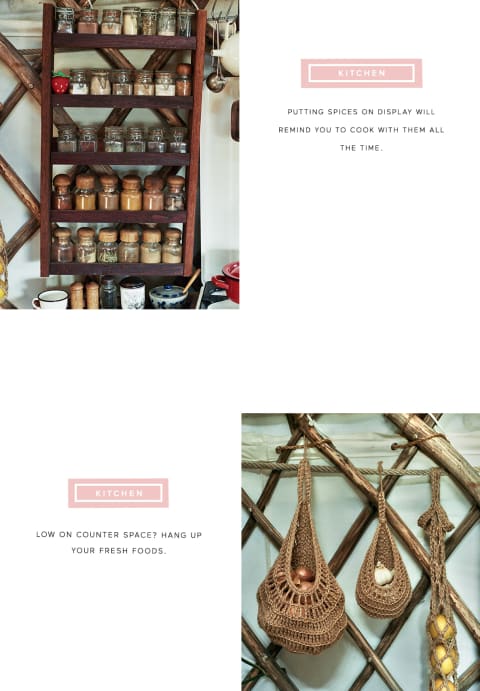Advertisement
Holistic Home Tours: 80% Of This Yurt Home In Belgium Is Waste Materials

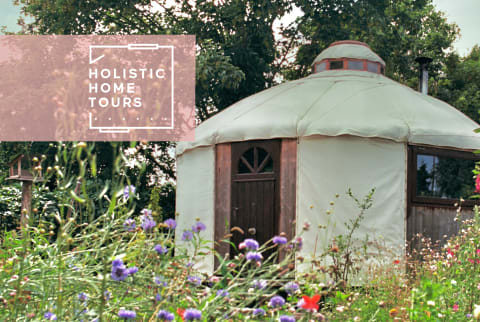
Traditionally, yurts were temporary shelters designed to be easily collapsed and built again somewhere new. Bianca and Daniël (@biancaanddaniel on Instagram) have reimagined the circular structure as a permanent home—and an enduring one at that. Located just outside of Ghent, Belgium, their yurt is just as strong and sturdy as any other house, despite being made almost entirely from waste materials. For our Earth Month edition of Holistic Home Tours, we asked the creative couple all about their inspiration for the incredible space, their approach to sustainability, and their favorite parts of yurt life.
What was it about living in a yurt that appealed to you?
The summer before building the yurt, we were trekking for a month in Central Tien Shan in Asia, home to many yurts. These friendly round structures, dotted in the remote mountain valleys of Kyrgyzstan, offered us comfort and cozy breaks for tea. We were fascinated by the simplicity and ingenuity of those yurts and took on the challenge of building one for ourselves.

Did you live in a traditional home before? Was moving into a yurt an adjustment?
Before the yurt, we lived in a self-built roulotte (tiny house) for eight years, so moving into the yurt was more of a continuation of our way of life than a radical break. The biggest difference is probably the fact that the tiny house felt more like living in a square box, whereas the yurt offers a cozy round space.
Tell me more about your yurt! What materials is it made of and what was the construction process like?
We built the yurt out of 80% waste materials (garbage), 5% secondhand materials or objects (such as our cooker from the '50s), and 15% new, local, or crafted materials/objects (such as the sheep felt or the woodstove).
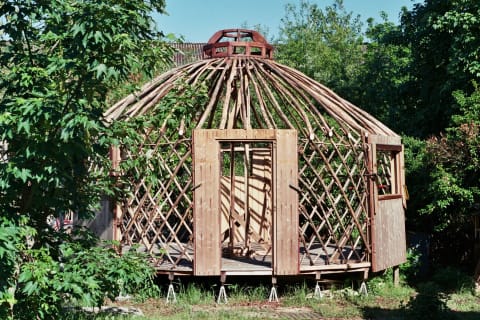
Whether recycled, bought secondhand, or purchased new, it was important to us that all the materials in the yurt were responsibly sourced. The frame of the house is made from willow poles that have been pruned from pollards very close to where we live. Our oak tabletop is made from the old staircase of a 17th-century house. The desk, and much of the pear and poplar we used, come from a film studio. Most of our beech, oak, and mahogany were found on the streets, from old thrown-away furniture.
The yurt is composed of many small components, which are rather weak by themselves, but when joined together they become one strong structure.
You can learn more about our materials here. It was quite a laborious job to turn waste materials into new items, but it was important to us. In order to live sustainably, we need to cut back on our consumption of the Earth's resources.
What is one part of living in your yurt that you weren't expecting?
We had some very big storms here in Belgium recently and were (positively) surprised that the yurt made it through the strong winds and heavy rainfall with no damage whatsoever, while the roof tiles and solar panels from other buildings in the neighborhood were flying away! The yurt is composed of many small components, which are rather weak by themselves, but when joined together they become one strong structure.
What has the yurt taught you about sustainable living? What advice do you have for anyone looking to reduce the environmental impact of their own home?
Many of the resources people consume end up in landfills as waste. We tried to reimagine this waste as a resource itself. However, this process was very labor- and skill-intensive. At this point, many recycling efforts are not economically viable for this reason. But this doesn't mean they are not worthy of our time! To spend a little more time rescuing what would've been destroyed as waste is a worthwhile and creative way to build one's nest, in our opinion.
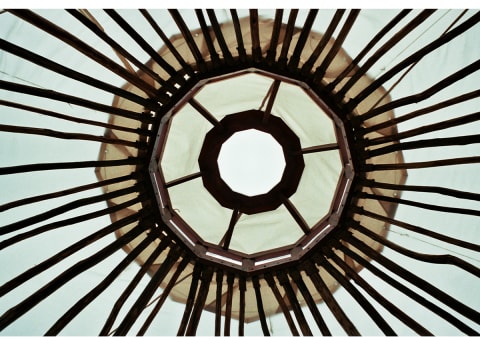
What noises can be heard in your home? What smells are there?
We can hear the trains rolling over the railroad close by, the singing of the birds—mostly wrens, robins, and dunnocks—and when it rains, the raindrops.
What object in your home brings you the most joy and why?
Our wood burner! It's a terracotta tile stove. The tradition of making terracotta tiles goes back to the potters' guilds in 14th- and 15th-century Transylvania. Every tile is pressed, polished, glazed, and painted by hand with traditional Saxon motifs.
Since ours weighs 200 kilograms (around 440 pounds), it was quite a challenge to bring it to Belgium and then lift it inside the yurt. But definitely worth the trouble; it keeps us warm and cozy.
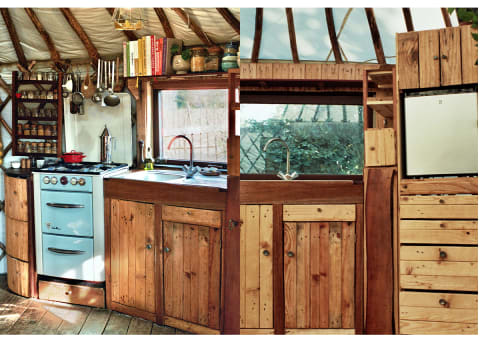
How does your home support your health & well-being?
Our home supports our well-being by offering us a place to live according to our values: appreciation for crafts, good food, self-sufficiency, living with the seasons, simplicity, and friendliness.
Living in a small space "forces" you to go outside more, which is also a direct health benefit. We spend a lot of time in our garden growing vegetables, chopping firewood, having friends over for picnics or campfires, reading in the hammock, etc.
What does the word "home" mean to you?
A place that, in exchange for constant maintenance and care, will safely host our family, cats, plants, books, and memories.
Recreate the look:
